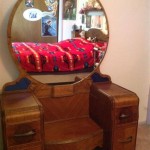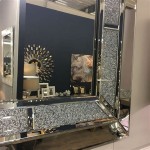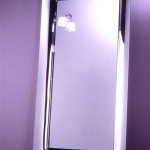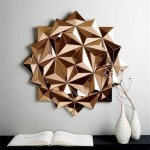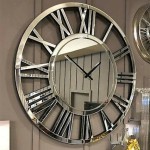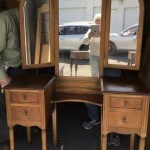Why Is a Concave Mirror's Image Sometimes Upside Down?
The phenomenon of an inverted image in a concave mirror is a direct consequence of the laws of reflection and the mirror's curved shape. Understanding this requires an examination of how light rays interact with the mirror's surface.
A concave mirror possesses a reflecting surface that curves inward, resembling a segment of the inside of a sphere. This curvature dictates the path of light rays striking its surface. The law of reflection, a fundamental principle in optics, states that the angle of incidence (the angle between the incident ray and the normal to the surface) is equal to the angle of reflection (the angle between the reflected ray and the normal). This law holds true for every point on the mirror's surface.
Consider a parallel beam of light rays approaching a concave mirror. Rays closer to the mirror's principal axis, the imaginary line passing through the mirror's center of curvature and its vertex, will reflect at smaller angles. These reflected rays converge at a point called the focal point. Rays striking the mirror further away from the principal axis reflect at larger angles, eventually also converging towards the focal point, though some deviations can occur depending on the mirror's aperture and the distance of the object.
The position of the object relative to the focal point and the center of curvature dictates the characteristics of the image formed. When an object is placed beyond the center of curvature, the reflected rays converge to form a real, inverted, and diminished image between the focal point and the center of curvature. "Real" signifies that the image can be projected onto a screen, while "inverted" indicates that the image is upside down relative to the object, and "diminished" implies that the image is smaller than the object.
To understand the inversion, consider two points on the object, one at the top and one at the bottom. Light rays emanating from the top of the object strike the mirror and, after reflection, converge below the principal axis. Conversely, light rays from the bottom of the object reflect and converge above the principal axis. This swapping of the top and bottom points during the reflection process results in the inversion of the image.
When the object is placed between the center of curvature and the focal point, the image formed is real, inverted, and magnified. It is located beyond the center of curvature. The same principles of reflection and convergence govern the image formation, leading to the inverted orientation.
A unique situation arises when the object is placed at the focal point. In this case, the reflected rays are parallel and do not converge, hence no real image is formed. Instead, a virtual image is formed at infinity.
When the object is placed between the focal point and the mirror, yet another distinct scenario unfolds. The reflected rays diverge, and the image formed is virtual, upright, and magnified. This virtual image appears to be located behind the mirror. In this case, the image is not inverted because the diverging rays do not cross each other before appearing to converge behind the mirror.
The size and orientation of the image depend on the distances involved. Ray diagrams, employing representative rays from the object to the mirror, offer a graphical method to determine the image location, size, and orientation. These diagrams utilize specific rays, such as the ray parallel to the principal axis (reflecting through the focal point), the ray passing through the focal point (reflecting parallel to the principal axis), and the ray passing through the center of curvature (reflecting back along its path). By tracing these rays, one can accurately predict the characteristics of the image.
The mathematical relationship between object distance (the distance between the object and the mirror), image distance (the distance between the image and the mirror), and focal length (the distance between the focal point and the mirror) is given by the mirror equation: 1/f = 1/do + 1/di. This equation provides a quantitative tool to analyze and predict image formation in concave mirrors.
The magnification of the image, defined as the ratio of the image height to the object height, can be calculated using the formula: M = -di/do. A negative magnification indicates an inverted image, while a positive magnification signifies an upright image. These formulas, combined with ray diagrams, provide a comprehensive understanding of image formation by concave mirrors.
Objects In The Mirror Are Actually Images Article Khan Academy
Why Can We See Our Inverted Image Inside A Concave Mirror When The Is Formed In Front Of It And Not Behind Quora
Objects In The Mirror Are Actually Images Article Khan Academy
Why Do Some Mirrors Turn You Upside Down When Back Up Quora

Concave Mirror Why Is Your Reflection Upside Down On A Spoon Aumsum Kids Science
Why Do Some Mirrors Flip The Image Upside Down Quora

Why Is Your Reflection Upside Down On One Side Of A Spoon But Upright The Other Mirrors Optics

Reflections

Snc2p
Why Do Magnifying Mirrors Turn Images Upside Down Quora

